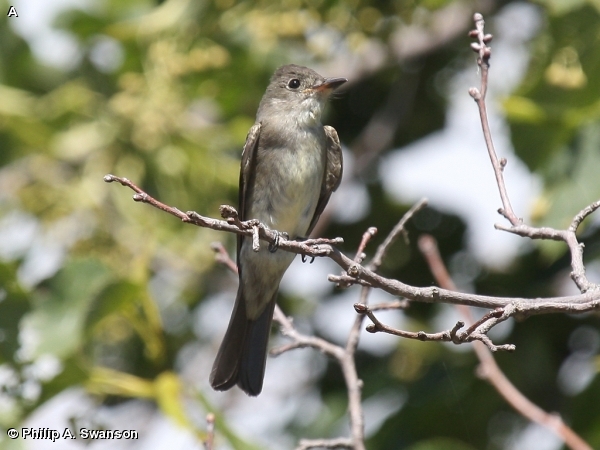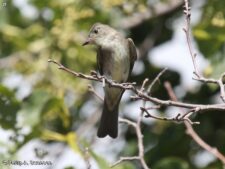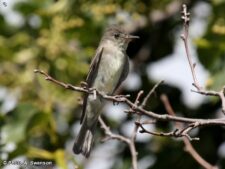
6.25 inches long. The Eastern Wood-pewee is a relatively nondescript medium-small sized flycatcher with white wing bars. There is usually a peaked crown. The upper parts are grayish-olive. The breast has an olive wash. The throat, belly, and undertail are whitish. It has a dark bill with yellow at the base of the lower mandible. The Eastern Wood-Pewee is generally distinguished from the Empidonax Flycatcher by its larger size, lack of an eye-ring, and longer and more pointed wings, which extend at least halfway down the tail when perched.
The Eastern Wood-Pewee is a common summer resident and breeder in the Forest. It generally shows up by late April and leaves by late September.
The Eastern Wood-pewee feeds high in the canopy by flying out to catch insects and returns to the same perch. One of the last spring migrants to return from its wintering range in South America, the Eastern Wood-Pewee breeds in virtually every type of wooded habitat in the east, from urban shade trees, roadsides, woodlots, and orchards to mature forest. This bird builds a small nest 5–20 meters above the ground. The parents cover the woven grass cup with lichens, building an inconspicuous nest that is very much like a knot on the top of the supporting branch. Although still considered common in most of its range, this species declined significantly on its breeding grounds over the last 25 years, perhaps in part because of heavy browsing of forests by white-tailed deer. It sings its plaintive “Pee-ah-wee” song throughout much of the summer.
Disclaimer: The content of NatureSearch is provided by dedicated volunteer Naturalists of Fontenelle Forest who strive to provide the most accurate information available. Contributors of the images retain their copyrights. The point of contact for this page is: Phil Swanson.


